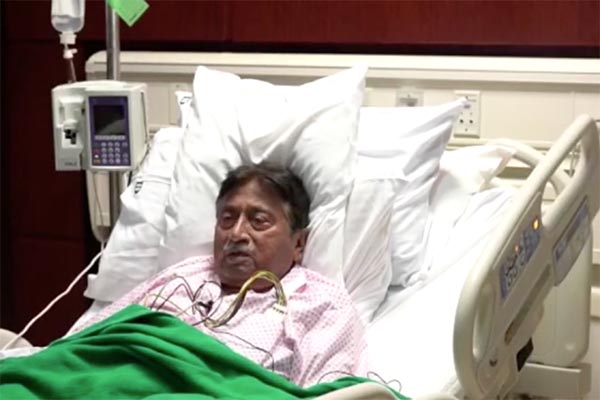The putschist ex-president of Pakistan: Who is Pervez Musharraf?
The retired general came to power in a coup d'etat in 1999 and remained at the helm of Pakistan from 2001, when he declared himself president, to 2008.

Musharraf, who left Pakistan due to lawsuits filed against him, started to live in Dubai in 2016. Musharraf, who was living in exile, was receiving his medical treatment in Dubai.
Pervez Musharraf, the former president of Pakistan, died on February 5, 2023, at the age of 79.
His family migrated from India to Pakistan
Pervez Musharraf was born on 11 August 1943 in Delhi to a mother and father whose mother tongue was Urdu.
Musharraf's family immigrated to Pakistan after the partition of India in 1947.
In the army he entered as an officer, he was appointed chief of staff by then-prime minister Nawaz Sharif in 1998, and a year later he staged a coup against Sharif.
At a time when public support was dwindling due to the economic slowdown and controversial legislation, Sharif wanted to blame the military after the failed military operation against Kashmir in 1999.
However, the army, which did not want to take the blame for the failure, staged a coup.
What happened after 9/11?
Musharraf supported the "war on terror" launched by US President George W Bush after the attack by Al Qaeda on targets in the US on September 11, 2001.
During this period, Pakistan carried out operations against radical Islamist groups operating in Afghanistan, such as the Taliban and al-Qaeda.
At that time, it was interpreted that Musharraf was swimming in dangerous waters by supporting the USA in the fight against the increasing anti-US and radical Islamist groups in Pakistan.
During the Musharraf period, Pakistan was frequently criticized by NATO and the Afghan government for not taking sufficient steps to cut the logistical support of radical Islamist groups; It was revealed that the al-Qaeda leader Osama bin Laden, who was killed in 2011, had been living in a house close to a military base in Pakistan for years.
How did he fall from power?
Musharraf had conflicts with the judiciary throughout his rule. In 2007, he dismissed the President of the Constitutional Court, Iftihar Mohammed Chaudri, and this step led to nationwide protests.
Later, he decided to organize an operation against the Red Mosque and the Islamic school next to it, which made an intense campaign for the implementation of sharia rules in the capital, Islamabad, and more than 100 people lost their lives in this operation.
The reactions caused by this operation played a role in the establishment of the Pakistani Taliban and this organization carried out a series of attacks.
In one of these attacks, one of the former prime ministers, Benazir Bhutto, also died. The UN investigation into the assassination concluded that the Musharraf government "deliberately failed to protect" Bhutto.
Nawaz Sharif returned from exile in 2007, which marked the beginning of the end of the Musharraf era.
Musharraf declared a state of emergency to extend his term but lost a majority in parliament in the February 2008 elections.
Six months later, when the impeachment process was started, he resigned and left the country.
He returned to Pakistan to run for the elections in March 2013 but was arrested.
Musharraf was also banned from engaging in politics, and many lawsuits were filed against him.
He went to Dubai in 2016 when the international travel ban was lifted due to health problems and has lived there since then.
As a result of the trial held in his absence, Musharraf was found guilty of treason and sentenced to death.
